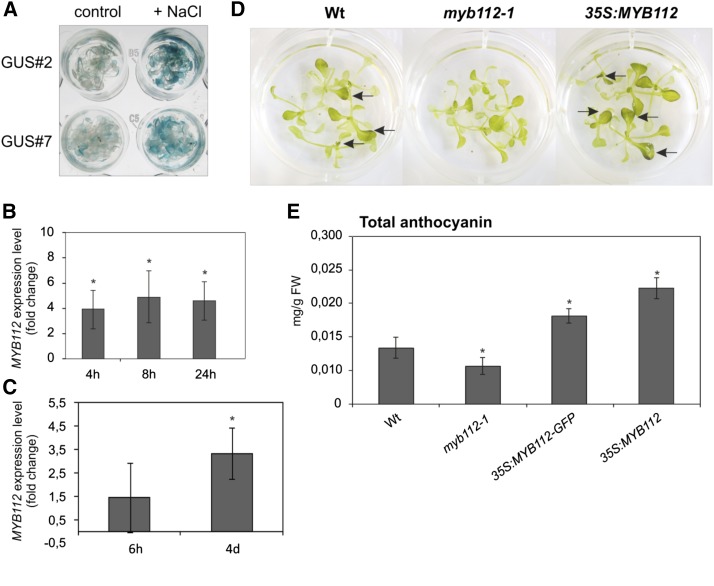Figure 6.
MYB112 regulates anthocyanin accumulation during salt stress. A, Ten-day-old Arabidopsis ProMYB112:GUS seedlings (lines 2 and 7) were treated for 72 h with 0 mm NaCl (control) or 150 mm NaCl (+NaCl) in liquid MS. Enhanced GUS staining is visible in salt-treated seedlings (right). B, Transcript level of MYB112 in wild-type seedlings treated with 150 mm NaCl in liquid culture. Incubation times were 4, 8, and 24 h. The data are represented as fold change comparison with untreated control seedlings. Mean values of three biological replicates ± sd are shown. C, Expression profiling using Affymetrix ATH1 arrays shows elevated MYB112 transcript abundance in plants grown hydroponically for 4 d with 150 mm NaCl compared with control plants. Plants were harvested after 6 h and 4 d of treatment. The experiment was performed in three biological replications. Numbers on the y axis indicate fold change values ± sd. D, Appearance of seedlings treated with salt for 3 d. Plants were grown on MS supplemented with 1% (w/v) Suc and after 2 weeks, transferred to liquid medium containing 150 mm NaCl. Note the lack of red pigmentation in myb112-1 seedlings. E, Total anthocyanin content was measured spectrophotometrically after extraction with HCl solution. Means ± sd are shown for three biological replicates. In B, C, and E, asterisks indicate statistically significant differences compared with wild-type (Wt) plants as determined by Student’s t test (P < 0.05). FW, Frozen weight.

